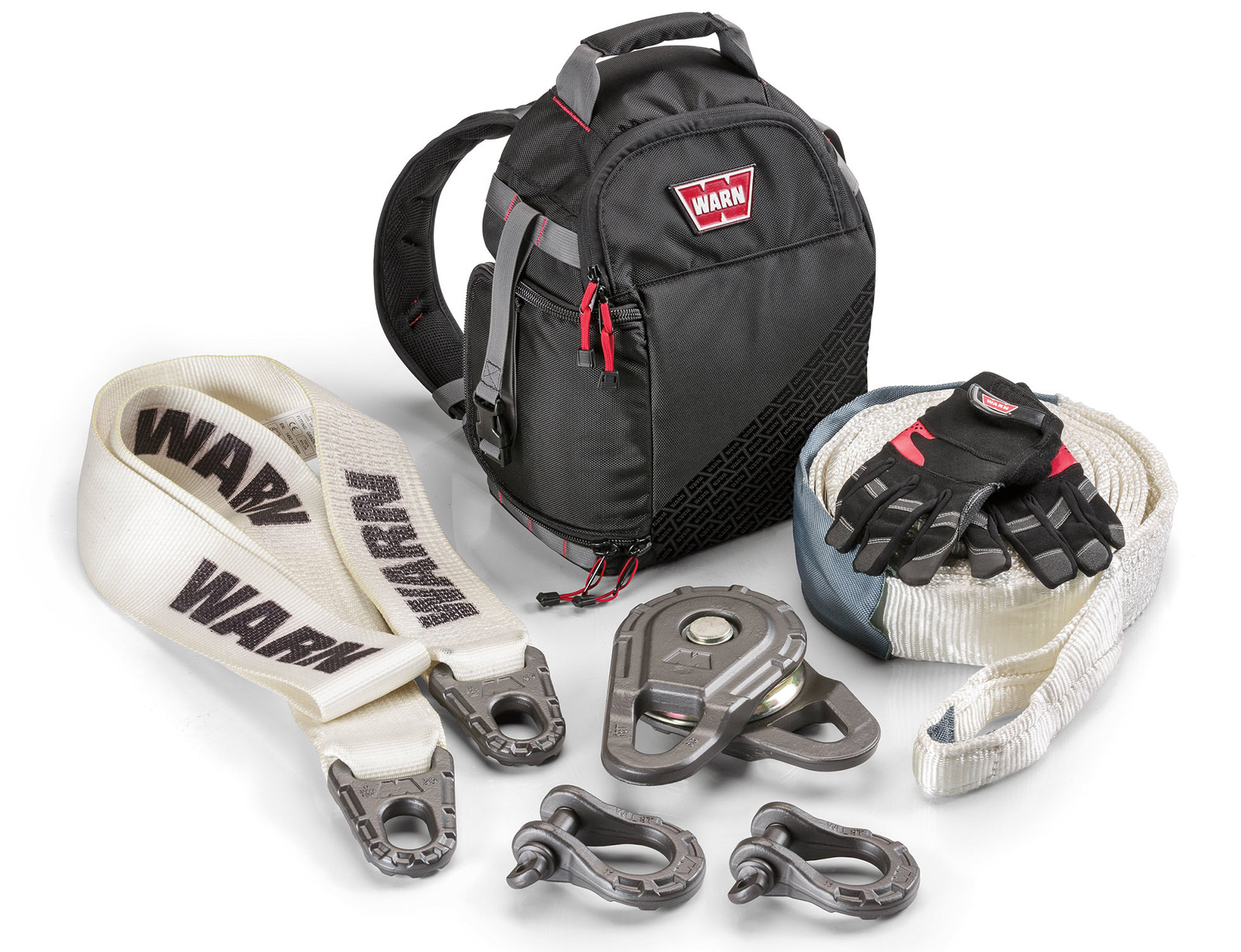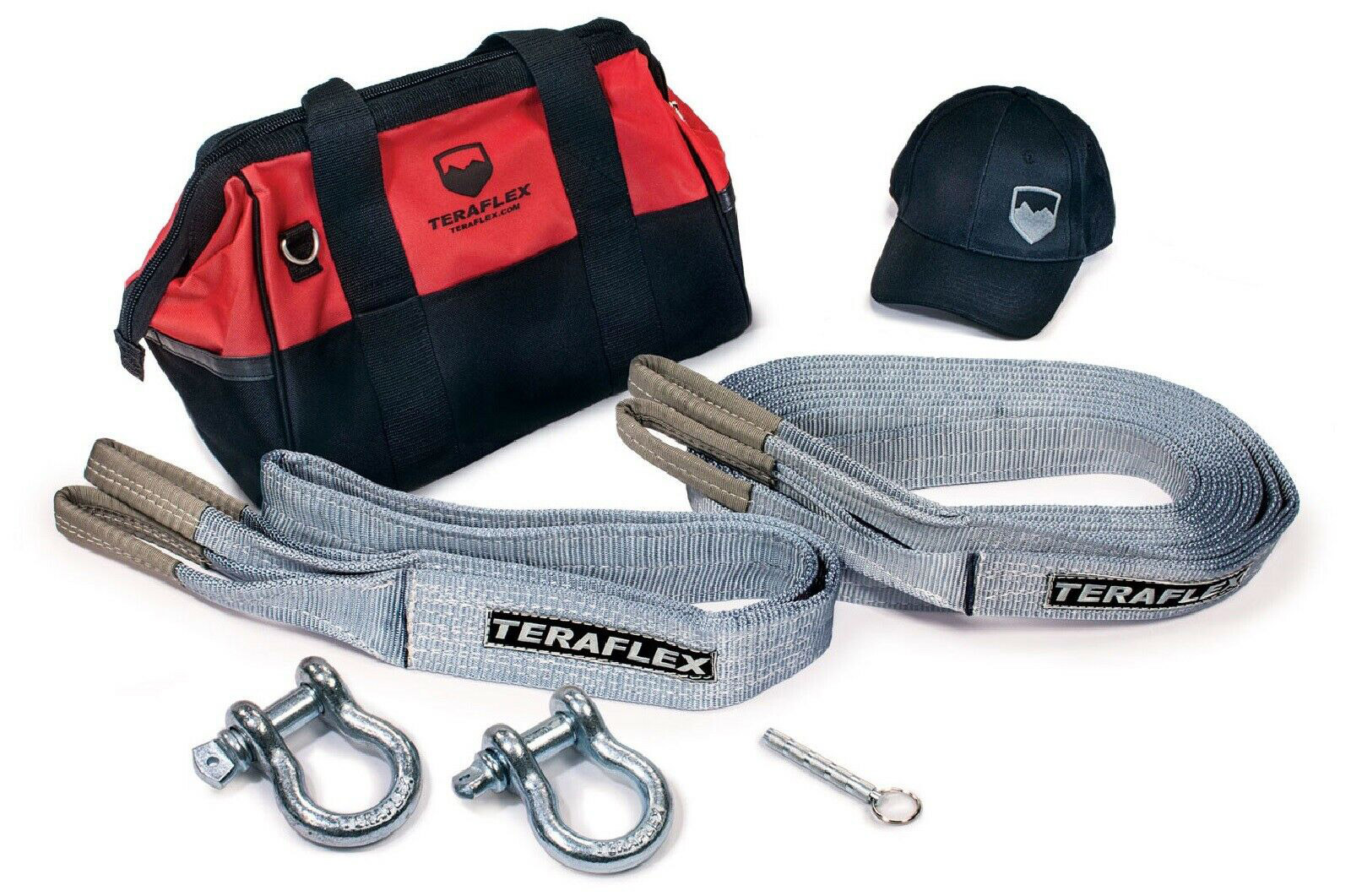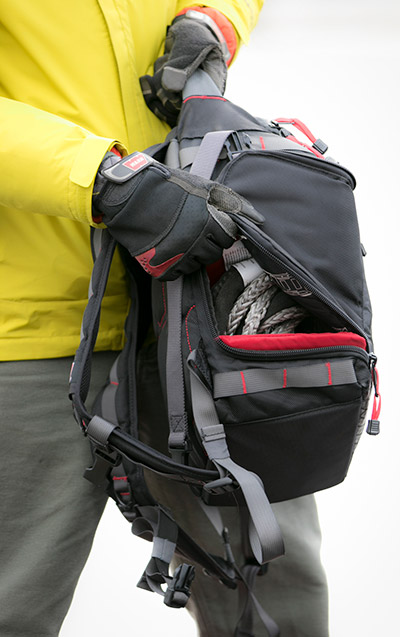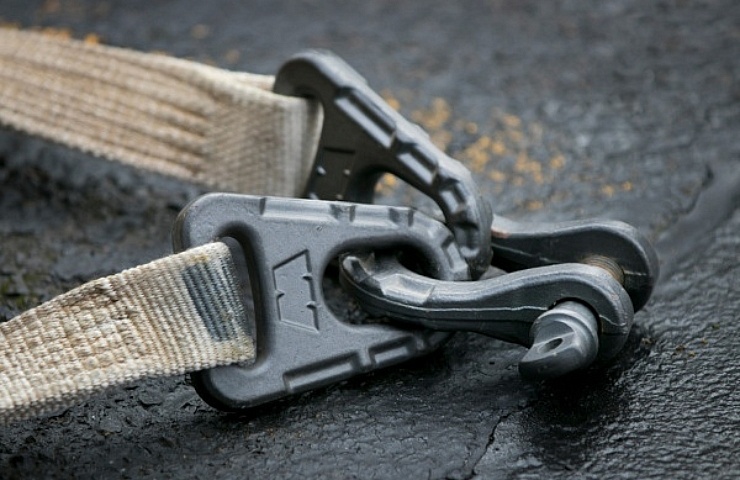Driving off-road in remote locations is exciting. But a solid off-road vehicle recovery kit is essential for anybody driving in dirt, mud, sand dunes, or crawling rocks. What items belong in your recovery kit?
Checklist for Vehicle Recovery Gear
Various manufacturers sell packages of off-road recovery gear on eBay. Choose your kit wisely and then add a few items to tailor a kit to your needs.
The essentials for a medium-duty recovery kit:
- One or more recovery straps
- Tree-trunk protector
- Pulley block (otherwise known as a snatch block)
- Two D-shackles
- Heavy-duty winching gloves

The Epic recovery kit from Warn Industries is nearly complete.
Add-on items for a complete recovery kit:
- Winch extension rope
- Additional snatch blocks or shackles
- A set of cluster hooks (that fit into cutouts and holes built into vehicle frames)
- A winch damper
- If you have a hitch, an extra winch remote for a hitch-receiver recovery bracket

An affordable TerraFlex kit is basic. You’ll need to add a few items.
Weight Rating and Quality
It’s essential to pay attention to the designated weight ratings for straps and shackles. Using an inadequate recovery strap or shackle could be a point of failure. The risks are potentially severe—the vehicle could be damaged or someone could get hurt.
Warn Industries, a top supplier, offers kits made for winches rated at 12,000 pounds and less. And it provides heavy-duty kits for use with winches capable of pulling up to 18,000 pounds.
When choosing a kit, start with a consideration of these two factors:
- The type of terrain where you will be traveling.
If you are consistently in sand, a Maxtrax recovery board or land anchor can aid in a successful recovery. For rocky terrain, carry an extra tree-trunk protector, extra rope, or a winch extension. With those add-ons, you can anchor a winch against big boulders or trees that are further away. - The recovery points on your rig.
Most eBay listings provide a list of compatible vehicles. Regardless, buyers should know a vehicle’s recovery or tow points. Those points might come stock from the manufacturer—or via an aftermarket winch or bumper. It’s dangerous to use a tie-down point to pull weight. Tie-down locations are designed to strap down a vehicle during shipment, not for recovery.
The next consideration is the materials, as follows:
- Forged gear is more expensive. But it’s more durable and reliable than cast counterparts. Forged items are physically forced into shape while remaining in a solid-state, removing air pockets and bubbles. Forged items are less prone to failure.
- Cast items are cheaper but not as strong. They are heated above their melting temperature and poured into a mold where they solidify.

WARN recovery kit backpack
Off-Road Recovery Kits in the Bag
A good quality bag or backpack can store all your recovery gear in a single, secure place. The pack also doubles as a winch-line damper during recoveries.
The WARN Epic Kit includes heavy-duty forged items, gloves that save your hands from winching rash, and a smartly designed backpack with two loops on the bag’s exterior. That allows users to snap the backpack into place on the line before winching.
The excellent ARB premium 4×4 off-road recovery kit includes a 17,600-pound snatch strap. A snatch strap uses webbing capable of stretching under load. The ARB kit also features a 26,000-pound tree-trunk protector as well as a 9,900-pound winch-extension strap. Other items to complete the kit include a snatch block, recovery damper, two bow shackles, and winching gloves that fit securely in a heavy-duty pack.
Are you looking for a less expensive basic trail-recovery kit? A recovery gear bag from TeraFlex includes a tree strap rated for 20,000 pounds, as well as a 30-foot tow strap, two D-ring shackles, a keychain air deflator, and even a hat. However, this affordable kit is missing a few things, such as heavy-duty gloves, a winch extension rope, and a snatch block. Those items can be purchased separately.
Once you have an off-road recovery kit, take time to practice using it (before you really need it). Get to know each item, its weight ratings, capabilities, and limitations. It’s impossible to over-prepare for vehicle recoveries.
Also see: Don’t Get Stuck in Your Truck—Here’s How





